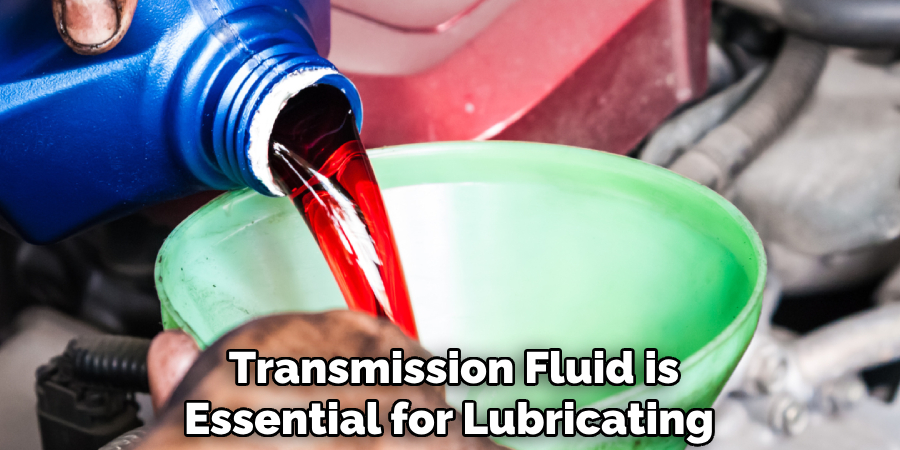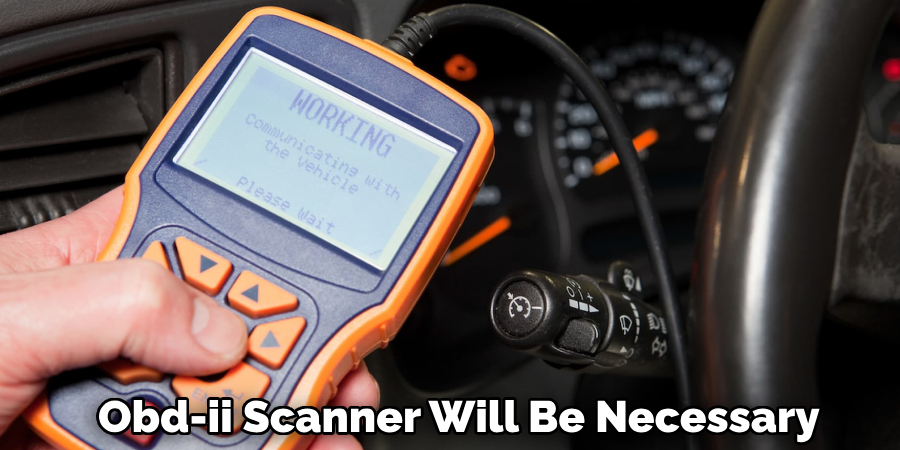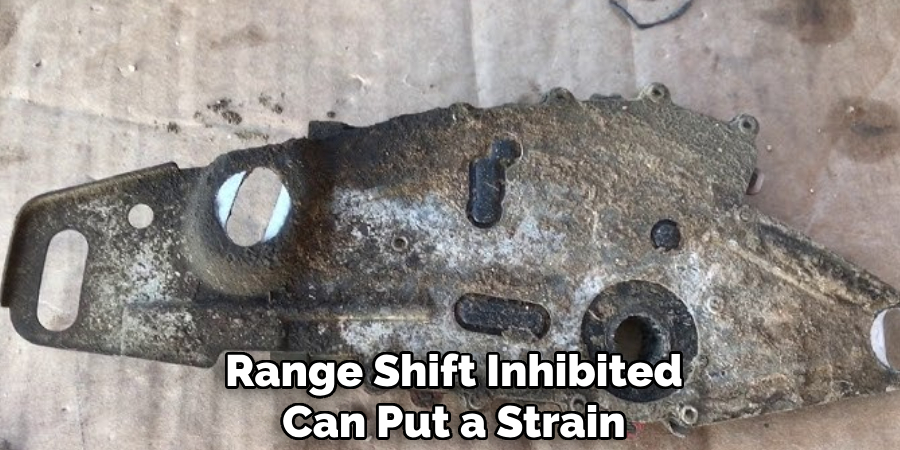Range shift inhibited is a common issue that can occur in vehicles equipped with automatic or semi-automatic transmissions. This problem prevents drivers from shifting the vehicle into a different range, such as moving from park to drive, thereby potentially causing inconvenience or even leaving the vehicle immobile.
Understanding the possible causes and solutions for this issue is essential for troubleshooting and restoring the vehicle to full functionality.

This guide on how to fix range shift inhibited aims to help vehicle owners and technicians identify the root causes and implement effective solutions to resolve range shift inhibited errors.
What is Range Shift Inhibited?
Range shift inhibited refers to a condition where the transmission system of a vehicle restricts or prevents changing from one range or gear position to another. This issue can manifest in various forms, such as not being able to shift from park to drive or reverse, getting stuck in a specific gear, or having difficulty shifting gears while driving. The exact symptoms may vary depending on the type of transmission and the severity of the problem.
It is important to note that range shift inhibited can affect vehicles with both manual and automatic transmissions, although the causes and solutions may differ. However, this guide will focus on addressing range shift inhibited in vehicles with automatic or semi-automatic transmissions.
Why Does Range Shift Inhibited Occur?
There are several potential reasons why a vehicle may experience range shift inhibited. These can include mechanical, electrical, or electronic issues within the transmission system. Some of the common causes are outlined below:
Faulty Solenoids
Solenoids are responsible for controlling the flow of transmission fluid and act as valves to direct pressure to different parts of the transmission. If one or more solenoids fail, it can lead to problems with shifting between gears. In some cases, a faulty solenoid may cause the transmission to become stuck in one gear, leading to range shift inhibited.
Low Transmission Fluid
Transmission fluid is essential for lubricating and cooling the components of the transmission system. If the fluid level is too low or becomes contaminated, it can cause issues with shifting gears and lead to range shift inhibited. This problem may also be accompanied by other symptoms such as slipping gears or difficulty accelerating.

Electrical or Wiring Issues
The transmission system relies on various electrical sensors and components to function properly. Any damage or malfunctioning in these parts can result in range shift inhibited. Common culprits include damaged wiring, blown fuses, or faulty connectors.
Mechanical Problems
In some cases, mechanical issues within the transmission, such as worn out gears or bands, can lead to range shift inhibited. These problems may require more extensive repairs and should be diagnosed by a professional technician.
8 Step-by-step Guidelines on How to Fix Range Shift Inhibited
Step 1: Check Transmission Fluid Level
The first step in troubleshooting range shift inhibited is to check the transmission fluid level. Ensure that the vehicle is on a level surface and the engine is running at idle temperature.
Locate the transmission dipstick, which is usually labeled or has a red handle, and use it to check the fluid level. If it’s low, top up with the appropriate type of transmission fluid as per the manufacturer’s recommendations.
If the fluid is contaminated or shows signs of discoloration, it may need to be flushed and replaced to resolve the issue.
Step 2: Check for Leaks
Once the transmission fluid level has been assessed, the next step is to inspect the vehicle for any signs of fluid leaks. Leaks can drastically reduce the transmission fluid levels and are a common cause of range shift inhibited. To check for leaks, visually inspect the area beneath the transmission and the ground where the vehicle is parked, looking for any puddles or wet spots that resemble transmission fluid.

Pay particular attention to the transmission pan, gaskets, and seals as these are frequent sites for leakage. If a leak is detected, it is important to identify its source and repair it promptly to prevent further transmission issues. Repairing leaks may involve replacing faulty gaskets or seals and ensuring all connections are secure. Additionally, after addressing any leaks, rechecking the transmission fluid level to ensure it is at the appropriate level is crucial to resolving the issue completely.
Step 3: Inspect and Test Solenoids
As mentioned earlier, faulty solenoids can cause range shift inhibited. To determine if this is the case, visually inspect the solenoids for any signs of damage or wear, such as corrosion or physical damage. If no visible issues are found, a diagnostic test may be necessary to assess their functionality accurately.
You can use an OBD-II scanner to retrieve any error codes related to the solenoids and determine which one(s) may be causing the problem. If a specific solenoid is found to be faulty, it will need to be replaced to resolve the range shift that is inhibited.
Step 4: Check Electrical Connections and Wiring
Damaged wiring or loose electrical connections can also lead to range shift inhibited. Inspect all wiring and electrical connectors related to the transmission system for any visible damage or looseness. You may need to refer to the vehicle’s service manual for the specific location of these components.
If any issues are identified, repair or replace damaged wiring and ensure all connections are secure. The use of electrical contact cleaner can also help to improve the connection between components.
Step 5: Test Transmission Control Module (TCM)
The TCM is responsible for controlling the transmission system’s operation, and any issues with it can result in range shift inhibited. To test the TCM, a diagnostic scan tool or OBD-II scanner will be necessary. Use the tool to retrieve any error codes related to the TCM and follow the manufacturer’s instructions on how to troubleshoot and repair them.

It is essential to note that the TCM may need to be reprogrammed or replaced if it is determined to be faulty.
Step 6: Perform a Reset
In some cases, performing a reset of the vehicle’s transmission system can help resolve range shift inhibited issues. Resetting the system can clear temporary faults and recalibrate electronic components, improving communication between the transmission and the vehicle’s computer.
To perform a reset, start by disconnecting the vehicle’s battery. Use a wrench to carefully remove the negative terminal cable and then the positive terminal cable.
Allow the vehicle to sit without power for at least 15 to 30 minutes. This will give the electronic modules enough time to discharge any stored energy, effectively resetting them. After the specified time has passed, reconnect the battery in the reverse order and start the vehicle. Test drive to see if range shift inhibited is still present.
Step 7: Inspect Transmission Valves and Bands
Faulty transmission valves or worn-out bands can also cause range shift inhibited. To inspect these components, you will need to remove the transmission pan following manufacturer’s instructions. Once removed, visually check for any signs of wear or damage on both the valves and bands. If any issues are found, they will need to be replaced.
You may also need to perform a transmission pressure test to ensure the valves and bands are functioning correctly. If they fail the test, replacing them is necessary to resolve the range shift that is inhibited.
Step 8: Seek Professional Assistance
If none of the above steps resolve range shift inhibited, it may be necessary to seek professional assistance from a qualified technician. They will have the proper tools, equipment, and knowledge to perform further diagnostics and repairs on your vehicle’s transmission system.
It is always recommended to seek professional help if you are unsure or uncomfortable with performing any steps involved in fixing range shift inhibited. Attempting to fix complex transmission issues without the necessary skills and expertise can lead to more significant problems and costly repairs. So, trust a certified mechanic for a proper diagnosis and resolution of range shift inhibited.
Following these steps on how to fix range shift inhibited and seeking professional assistance when needed can help to identify and resolve range shift inhibited, ensuring the smooth operation of your vehicle’s transmission system.
Frequently Asked Questions
Q: Can Low Transmission Fluid Cause Range Shift Inhibited?
A: Yes, low transmission fluid levels can inhibit range shifts as they affect the proper functioning of the transmission system. It is crucial to check and maintain adequate fluid levels at all times to prevent this issue.
Q: How Often Should I Check My Transmission Fluid Level?
A: It is recommended to check the transmission fluid level every time you get an oil change or at least once a year. However, if you notice any signs of leakage or shifting issues, it is essential to check the fluid level immediately.
Q: Can I Drive with Range Shift Inhibited?
A: No, driving with range shift inhibited can put a strain on your vehicle’s transmission system and cause further damage. It is best to address the issue promptly and avoid driving until it has been resolved.
Q: Will Resetting the Transmission System Fix the Range Shift Inhibited?
A: Resetting the transmission system can help resolve range shift inhibited in some cases. However, if the root cause of the issue is not addressed, it may come back again in the future.

Conclusion
Addressing the range shift inhibited issue requires a systematic approach to diagnose and resolve the underlying causes within a vehicle’s transmission system. From checking the transmission fluid levels to inspecting solenoids and the TCM, each step is crucial for restoring proper function.
While many troubleshooting steps can be performed by car owners, seeking professional assistance remains an essential option for resolving complex or unresolved issues.
By maintaining regular vehicle maintenance and promptly addressing transmission concerns, drivers can ensure reliable vehicle performance and prevent future complications related to the range shift-inhibited condition. Thanks for reading this article on how to fix range shift inhibited.
